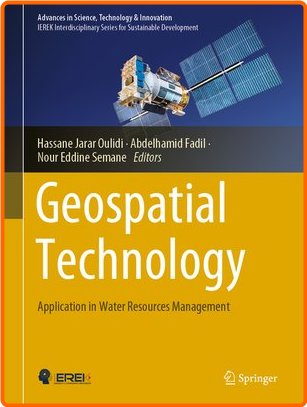
[center]English | 2025 | ISBN: 1394166362 | 475 pages | PDF | 90.65 MB[/center]
Geospatial Technology for Natural Resource Management (Shruti Kanga, Gowhar Meraj, Suraj Kumar Singh, Majid Farooq and M. S. Nathawat) (2019)
Catergory: Nature, Science, Nonfiction, Geography
Publisher: Springer International Publishing
The first stage in developing a sustainable resource development strategy is to assess the resources' availability and condition. Assessing the baseline rates or levels of various phenomena, as well as establishing the trends in these measures or conditions, identifying the sources of rates and trends, and assessing the consequences of these rates or trends are all steps in the assessment process. A third component, mitigation, indicates the policies or directives that must be implemented as a result of the incident. Modern geospatial technologies, such as Remote Sensing (RS), Geographic Information Systems (GIS), and Global Positioning Systems (GPS), have provided extremely powerful methods for surveying, identifying, classifying, mapping, monitoring, and characterizing various resources, both renewable and nonrenewable, living and nonliving in nature. An essential part of remote sensing is determining, increasing, and monitoring the overall capacity of the Earth through the use of geospatial data. Global environmental protection, disaster reduction, and sustainable development depend on satellite observations of land, oceans, and the atmosphere, particularly during natural and human-induced events. When using space-based sensors for remote sensing, it is possible to gather both repetitive (ranging from minutes to days) and global (covering the entire globe) data. Crop inventory and forecasts, drought and flood damage assessment, land use monitoring, and management are just a few of the possible uses for these data. For many applications relevant to national development, India has become a leading provider of observational data in a wide range of resolutions in many geographical, spectral, and temporal dimensions. In order to identify a geographic location and describe the context, GPS gives worldwide positionally accurate coordinates. GPS is an important monitoring tool since it can repeatedly collect data about the Earth's characteristics and phenomena at a low cost. As a result of GIS's ability to visualize geospatial data, we are able to communicate complicated information, such as natural resources, in a way that is both convenient and effective. As a further benefit, GIS can generate, edit, store, and analyse vital spatial data for planning and decision-making purposes. An important development in technology has made it possible to examine environmental and natural resource challenges in a spatial perspective. When it comes to solving problems, GIS provides the ability to model diverse phenomena and examine their interaction, for example, in a place-based context, so that we may evaluate complex and integrated concerns from local to global dimensions.
�� Contents of download скачать:
�� Geospatial Technology For Natural Resource Management - 2024 - Kanga.pdf (Shruti Kanga, Gowhar Meraj, Suraj Kumar Singh, Majid Farooq and M. S. Nathawat) (2019) (90.65 MB)

⭐️ Geospatial Technology For Natural Resource Management ✅ (90.65 MB)
NitroFlare Link(s)
https://nitroflare.com/view/1D2152B9B76D3DA/Geospatial.Technology.For.Natural.Resource.Management.rar?referrer=1635666
RapidGator Link(s)
https://rapidgator.net/file/6cee4b5c2143b754ca159901558b9c85/Geospatial.Technology.For.Natural.Resource.Management.rar

